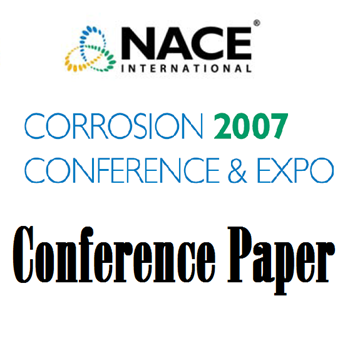Search
07586 In Situ Investigation of the Passivation of Alloy C22 and of the Passive Films Formed on Alloy C22 in Acidic Electrolytes at Room Temperature and at 90 C
Also Purchased
07568 Selection of Dissimilar Metal Welds in Severe Environments for Today's Petrochemical Plants
Product Number:
51300-07568-SG
ISBN:
07568 2007 CP
Publication Date:
2007
$20.00
07567 Controlling Unit Overhead Corrosion: Rules of Thumb for Better Crude Desalting
Product Number:
51300-07567-SG
ISBN:
07567 2007 CP
Publication Date:
2007
$20.00
07564 FCCU Light Ends Plant Carbonate Stress Corrosion Cracking Experience
Product Number:
51300-07564-SG
ISBN:
07564 2007 CP
Publication Date:
2007
$20.00




